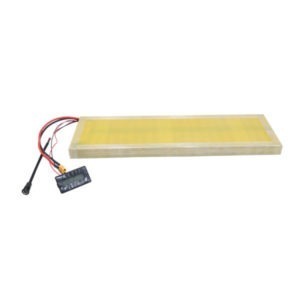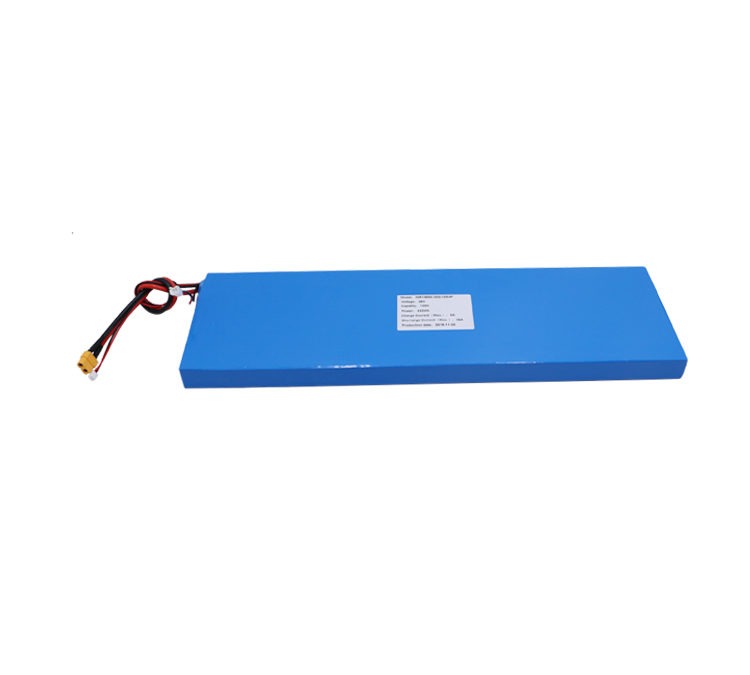Development process of lithium ion battery

Because the chemical properties of lithium metal are very active, the processing, preservation and use of lithium metal have very high requirements for the environment. Therefore, lithium ion battery production should be carried out under special environmental conditions. Due to many advantages of lithium-ion batteries, lithium-ion batteries are widely used in electronic instruments, digital and household appliances.
Later, Sony Corporation of Japan invented a lithium-ion battery with carbon material as negative electrode and lithium containing compound as positive electrode. In the process of charge and discharge, there is no metal lithium, only lithium ion, which is lithium-ion battery. When the battery is charged, lithium ions are generated on the positive electrode of the battery, and the generated lithium ions move to the negative electrode through the electrolyte. The carbon as the negative electrode has a layered structure, which has many micropores. The lithium ions reaching the negative electrode are embedded into the micropores of the carbon layer. The more lithium ions embedded, the higher the charging capacity. Similarly, when the battery is discharged, the lithium ion embedded in the negative carbon layer comes out and moves back to the positive electrode. The more lithium ions returned to the positive electrode, the higher the discharge capacity.
With the wide use of digital products such as mobile phones and laptops, lithium-ion batteries have been widely used in such products with excellent performance, and have gradually developed to other product application fields in recent years.
Characteristics of lithium ion batteries
High energy density
The weight of lithium-ion battery is half that of nickel cadmium or nickel hydrogen battery with the same capacity. The volume is 20-30% of nickel cadmium and 35-50% of nickel hydrogen.
High voltage
The working voltage of a single lithium-ion battery is 3.7V, which is equivalent to three nickel cadmium or nickel hydrogen batteries in series.
Pollution-free
Lithium ion batteries do not contain harmful metal substances such as cadmium, lead and mercury.
Lithium free
Lithium ion batteries do not contain metal lithium, so they are not limited by the provisions on prohibiting the carrying of lithium-ion batteries in passenger aircraft.
High cycle life
Under normal conditions, the charge and discharge cycle of lithium-ion battery can exceed 500 times.
No memory effect
Memory effect refers to the phenomenon that the capacity of nickel cadmium battery decreases during the charge discharge cycle. Lithium ion batteries do not have this effect.
Fast charging
Using a constant current and constant voltage charger with a rated voltage of 4.2V, the lithium-ion battery can be fully charged within 1.5-2.5 hours; The newly developed lithium iron phosphate battery can be fully charged in 35 minutes.
Application of lithium ion battery in the field of electric bicycle
At present, the high-power lithium-ion power lithium batteries used in electric bicycles are basically composed of multiple single batteries in series and parallel. In the process of its application, the main problem of power lithium battery is the large dispersion between each single battery, which affects the safety and service life of the whole battery pack.
Therefore, we believe that the ideal power lithium battery pack should be managed according to the safety and service life of the battery pack.
Problems and solutions of lithium ion battery for electric bicycle
Overcharge
The normal lithium battery shall be charged up to 4.2 v. on this basis, the iron lithium ion battery shall be reduced by 0.5 V as the upper and lower limits. If the charging is higher than 4.3 V, it is overcharged. To solve this problem, it is necessary to accurately measure the true value of voltage: adopt a scientific charging method, full but not full.
Over release
The minimum discharge voltage of lithium-ion battery is 3.2 v. if the discharge voltage is lower than 3 V, it is over discharge. Accurately measure the true value of electric quantity: adopt scientific and safe discharge method to discharge without discharge.
Battery temperature detection
If the temperature of lithium-ion battery is too high, it may explode. Therefore, the temperature of each battery should be monitored to ensure that there is no explosion due to excessive battery temperature.
Overcurrent protection
The lithium-ion battery has a rated current. It is not allowed to exceed the rated current, otherwise it will burn out the battery. Therefore, it is necessary to accurately measure and control the charge and discharge current, and take overcurrent protection measures efficiently and quickly to prevent short circuit, reverse connection and other accidents when the current exceeds the set current.
Equilibrium
There is deviation in the voltage of lithium-ion battery. Without balance control, with the addition of charge discharge cycle, the voltage of each single cell will gradually differentiate and the service life will be greatly reduced. When charging and discharging a group of lithium-ion batteries, considering the inconsistency of each single battery, balanced measures can be taken to ensure safety and stability.
